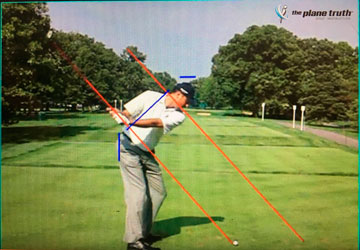Matt Kuchar secured the win at the Mayakoba Golf Classic shooting 22-under par, his lowest score to par in his career. Kuchar remarked after the round that, “40 may be the new 20, ”and with the Tour veteran off to a great start to the 2018-19 season.
It is worth noting, however, his last season was well below his standards and some major opportunities were missed, namely the Ryder Cup and the Tour Championship (he finished 76th in FedEx Cup standings.)
Kuchar had to battle through 115 starts and over 4 and a half years to get his next victory, the 8th of his career. This is the perfect message for many amateurs out there to commit to a plan and stay the course. There have been many players with better records and win totals than Kuchar that have chased swing changes, coaching changes, and anything “new” to get back on track.
When most golf fans think of Kuchar, his dramatic swing change comes to mind. The 2008 and 2009 seasons saw Kuchar adjust some fundamentals in his swing motion to both eliminate the left miss off the tee and gain some distance. His swing coach, Chris O’Connell, had to work with Matt on his overall swing motion to produce a more body-driven one-plane swing. At first, the look and feel were not comfortable to Kuchar, but O’Connell quickly pointed out that although many would call the swing flat, they could not be more wrong.
The majority of golfers, and even instructors, will call a swing flat just because the left arm, hands, and club appear low without taking into consideration the body position.
Kuchar is 6’4” and needs to bend more at the hips, creating spine angle to find a proper golf posture at address. His perfect backswing puts the left arm almost exactly parallel to his shoulder plane and sets the table for a textbook one plane swing. O’Connell worked hard with Kuchar to groove this motion because swinging on one plane requires the body to drive the swing and impact sees very minimal hand action, thus eliminating the misses off the tee.

Getting more accurate works, but Kuchar wanted to get longer, too. To make this happen, O’Connell had him load better into his right side, specifically sitting into his right hip. A great way to get this feeling is to think about the toes on your right foot (for right-handed golfer) lifting off the ground slightly on the backswing. This keeps the hips back and creates torque as the body rotates back. This a great feel to cure falling into the ball during the swing.
They worked on the right hip moving away from the ball slightly during the backswing and keeping the shoulders on plane and steep. This produced tremendous torque, similar to the athletic motion a discus thrower. As a result, Matt picked up eight yards off the tee, jumping 50 spots in driving distance, and gained 1.77 mph clubhead speed, which was the third biggest gain on Tour season to season.
Since these changes, Kuchar has been an ATM on Tour — a regular on the Ryder and Presidents Cup teams over the last eight years, always near the top on the money list and contending for tour events and mixing it up in majors. However, after one off season there was no panic. Even given the four-year victory drought, O’Connell and Kuchar focused on what they trusted and knew worked.
The lesson here is trusting the progress you have made, understanding golf involves a learning process. Results are never going to be incrementally linear, prepare for some bad rounds and even months, but do not run to change everything you trust over the ball or search for the new thing.
Instead, evaluate your fundamentals and revisit what has worked for you in the past. You may find the recent bad play is a result of straying from some strong points in your game.





